When you are assigned a class that you have not taught before, there is a lot of preparation that needs to take place. First, you need to talk with the Department Chair and get a copy of the syllabus from the last time the class was offered. If possible, get a couple of past syllabi for the class to compare different instructor’s classes. You can look at the class structure, assignments, assessments, and methods of teaching the class. Often, there is a lot of the material in the syllabi that you can use to structure your class.
You can use the syllabi to determine the expected student learning outcomes and what the instructor did to teach to those outcomes. From the syllabi, you should have a good idea of what some of the common past assignments were in the class. You should also find out the textbook assigned to the class and get a copy (more information is under a separate textbook tip). From here you will start making your syllabus (see the next tip).
Classes are built around course outcomes or competencies divided between class periods. What are the students expected to know, be able to do, or apply upon the completion of the class? Sometimes the competencies will be provided by the department and found on past syllabi. Other times the outcomes will need to be crafted from the course description. Every course that at institution offers will have the class listed in the catalog, along with a set course description. Some institutions will want this exact course description from the catalog on your syllabus. The class should be designed to meet the objectives identified in the course description.
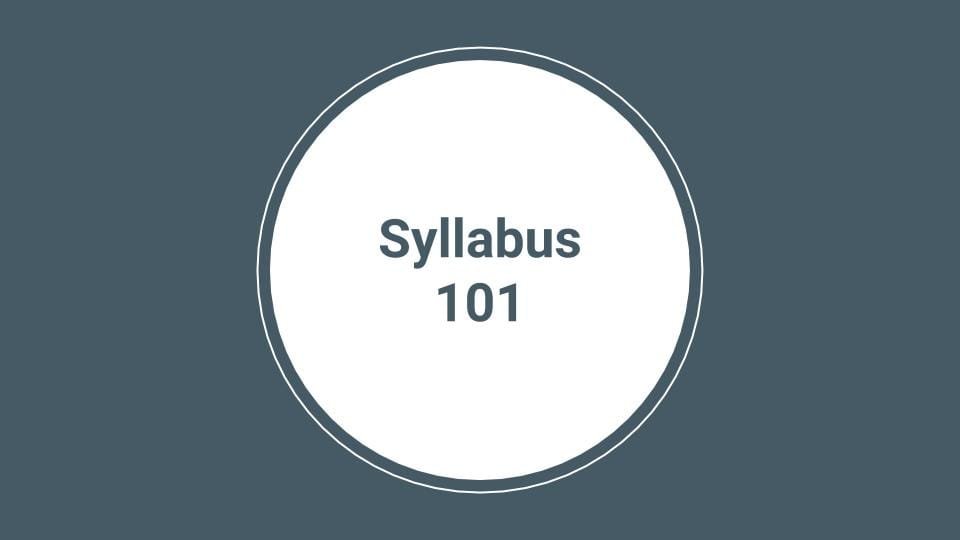
The catalog will also identify if there are prerequisite classes required before a course. While you are looking at the catalog, it is an also a good time to examine which classes came before this class and what class follows this class. This helps you understand the knowledge that should students might enter your class with and what information they need to leave with to be successful in their next class. A really important thing for instructors to remember is that their class fits into an entire curriculum. Some classes will need a dearth of information explained because other classes are counting on that content being introduced. Other classes are meant to take small steps. If you are teaching a class that has a second part of second level it is critical to know where your class fits. You can and should request syllabi from prerequisite classes and for classes that follow yours.
Some institutions use a syllabus template. You would insert the information relevant to the class and leave the other information such as institutional policies in place. Other institutions have a list of required information or notices that need to be included in the syllabus, but don’t require a certain format.
Now that you have received a couple syllabi you can evaluate the syllabi to see evaluate if the class seems well crafted. You can first look at how well learning outcomes and objectives are communicated to students. In a study by Laurel Willingham-McLain (2011) syllabi were analyzed to examine how clearly learning outcomes were communicated to students. The ratings were:
· Well developed: learning outcomes are learner-centered and/or include language which describes observable student learning or demonstrable behavior (e.g. “student will be able to”; “student will exhibit”) (Willingham-McLain, 2011).
· Somewhat developed: learning outcome is course or instructor centered and/or not able to result in observable evidence of learning (e.g. “this course will offer”) (Willingham-McLain, 2011).
· Not developed/ not listed: no articulation of what students will be able to know/do/value/ after this course (Willingham-McLain, 2011).
You also need to analyze how course outcomes match with characteristics of the students and their background and preparedness to take the class. In other words, do the course objectives meet the needs of the students that take the class? The syllabus should provide a good outline and structure to the class that allows faculty and students to recognize where they need to go and what they need to do to get there.
By taking the past few steps, you have looked at past syllabi, looked at the course description, and examined the past course objectives and outcomes that are expected from the class. The next step is to start working on an outline for the class.
Determine what you think students will know they enter the class. This will comprise a review that you should provide on week one to see if they have the prerequisite knowledge. Then by using the outcomes, determine what the students should know when they complete the class. The class is a set number of weeks, so I start with simply numbering the weeks. There are a few things that are similar between almost every class I teach, so I add those items to my outline. I generally like to do a review of prerequisite knowledge, an overview of the syllabus and of the class, my personal introduction, and a student introduction/ice breaker week one. At the midpoint, I have a midterm assessment. Depending on the class, the midterm could be a project, presentation, or exam. The final week will also be a project, presentation, or exam. So, I at least have an idea of what three weeks are going to look like.
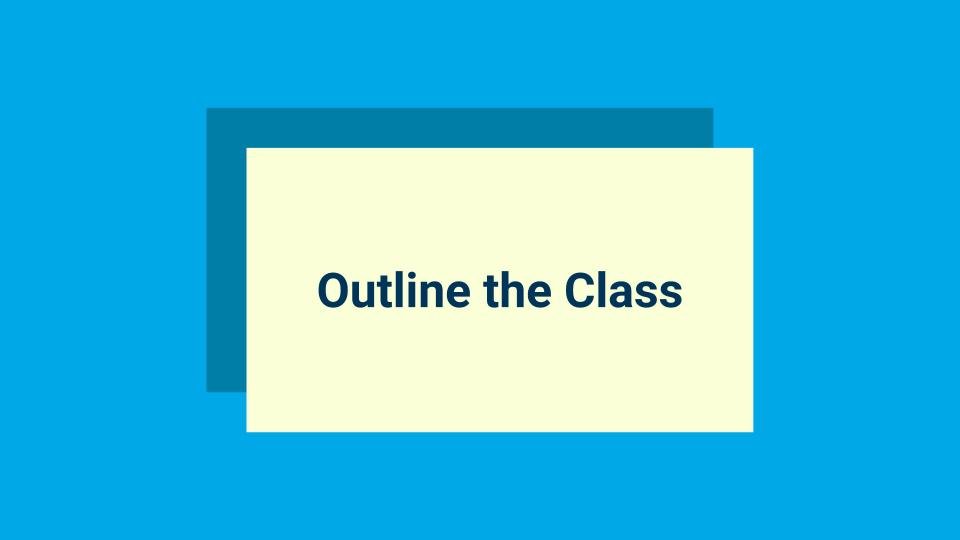
From this point, you will need to build the rest of the outline. The course description and outcomes from previous syllabi can be condensed to broad topic areas. If the class closely mirrors the textbook then chapter headings from the course textbook can be used to determine what material should covered in the class. Plug those chapter titles, headings, or other keywords into the outline until you have all of the broad topic areas that should be covered in the class.
You can then start to shuffle the headings between different weeks. You want to make to the content flow from week to week in a logical order. Now you have a framework, in the form of an outline, that can then be expanded into objectives, assessments, and lesson plans.
The outcomes of a class need to be turned into weekly course objectives. A clear objective should state what should happen and how it will be measured. If the class has previously been offered then you can use the objectives and outcomes from the previous classes. The objectives should be rooted in the course description. If no objectives exist, you will have to create objectives. Look at your online and choose one of the weeks. Decide what the student should be able to do and how the student can demonstrate knowledge of that material.
Some examples:
· Recall the scientific name for a fruit fly.
· Identify the parts of a serif font.
· Demonstrate the process of adding images to a website.
· Compare and contrast positivism and post-positivism.
· Generate a graph of a linear equation.
With each of the examples above, an action word (based on blooms taxonomy) will determine how an outcome will be measured. An assessment would then need to be made to access students. If you look at the list above, there are several ways these could be measured using assessments. All of the objectives could be made into part of a written test. By examining the action words, some of the objectives would seem to be more open response and others could be multiple choice. Some of the objectives could be done in front of the class, orally recited, viewed on computers, and other ways. Every objective should be written in a way that can be assessed.
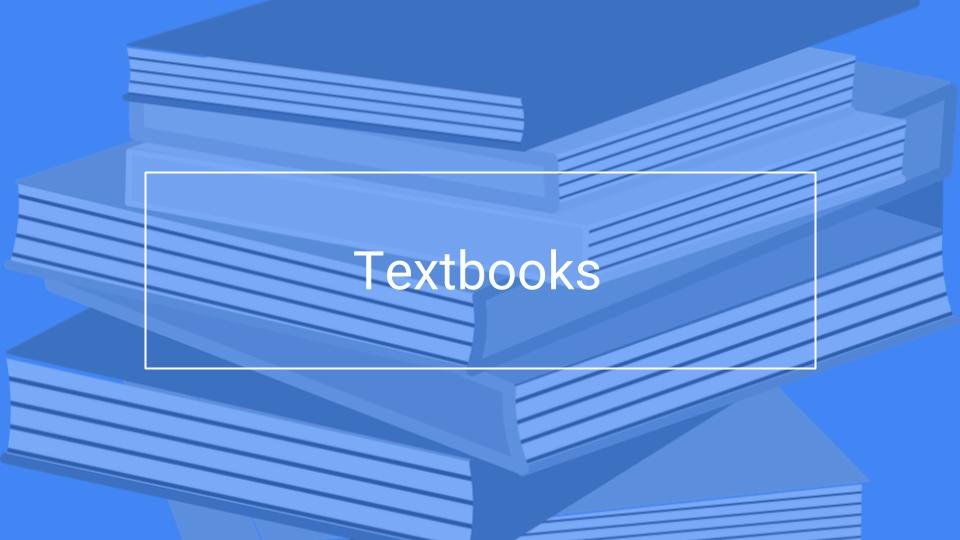
Most classes will have a textbook. Sometimes an instructor can choose or change the textbook, but other times it will be previously assigned to the class. In the Higher Education Opportunity Act of 2008 there is a textbook price disclosure law which requires the textbook to be assigned by the time a student is registered so that students can price compare. The effect the law has for instructors is that it prevents last minute book switches. Any textbook switch would need to occur before registration.
There are several ways to get the book depending on the institution. Some campus bookstores will let you charge a book to the department with prior department approval. Sometimes the Department Chair/Dean will have a copy of the book to give instructors or lend until another copy is obtained. If the book is electronic it could be as simple as setting up an account and getting a redemption code for the book.
Publishers will often let instructors have a free desk copy (instructor copy) of textbooks used in classes. If you are able to switch textbooks, publishers will provide evaluation copies of textbooks could be adopted in a class. The publisher might require you to register online for an account to request digital or printed evaluation texts.
You should create an online account with the textbook publisher. One benefit of signing up through the publisher is that there might be additional instructor resources provided by the author or publisher. Sometimes there can be PowerPoints, quizzes, study guides, test banks, and other resources. By utilizing the resources provided for a textbook, you can save a lot of class prep time. Another reason to setup an online account with publishers, is the ease of looking at and evaluating other potential textbooks digitally.
With objectives clearly written, determine how that can be measured. Is it a test, a project, a presentation? Is it something observable that you monitor in the classroom? As you saw in the previous tip, objectives and outcomes need a way for you to tell if the student understands and there are multiple ways to measure an outcome.
Every class has to have some assessments to see if students are learning. Assessments can come in various forms. Some common forms include something the student will do such as a quiz, project, or journal. Other assessments could be visual or auditory. You could have a student explain a concept out loud or draw an illustration of a concept. An instructor might scan the classroom to see if the student is progressing and participating. You can check on individual progress by walking around the room and asking questions. If you want to reward students who work and participate in class then add participation or progress grades as you design the class.
With quizzes, the post-quiz in-class review of the quiz can be just as important as the quiz. It provides a re-teaching opportunity where the students get to participate and discuss questions that they may have missed.
Journals can be useful to assess student learning. You will typically assign a weekly or daily writing that asks for what they learned that day. Ideally you will also ask the students to write in questions that they still have about the day’s lesson or project. You can either review the journals in class and answer individual student questions or collect the journals and respond to questions at the beginning of the next class. The journals will provide a good guide to what needs to be re-taught or additional clarification to the class.
The final assessment is meant to gauge if the student understands the content of the class overall. You will most likely find that some of your classes have heavily weighted exams or projects. Typically, college level instructors try to avoid “busy work,” so larger exams are used as the grade assessment tool in class. Busy work not only requires time for students, but also requires the instructor to devote time to grading several smaller assignments outside of class time.
To prepare students for a heavy weighted exam class, you should explain and give examples of what types of questions will be asked on the examinations. Studying for an open response, a fill in the blank, or a multiple-choice test can be quite different. Also let the students know if questions will be from the book, from class notes, outside materials, or a combination of sources.
Many students think that a multiple-choice test is the easiest, but multiple-choice tests can be quite difficult. Tell students to read every response before marking their answer. Also watch for questions that request “all that apply”. Sometimes students miss that part and select just the first answer that sounds correct.
I like to have at least one open response question. Open response questions are good because the questions can involve recall, application, replication, and synthesis of information. It is also good practice for the students to be able to explain things in their own words.
Depending on the class, your final assessment could be a final exam and/or a final project. The goal of the final is to test if students received and understood the knowledge that was imparted from the class. If the class has a final project, let the students know what the project is going to be so that they can get started and prepare. For final projects, it is useful to incorporate a presentation into part of the project (usually the last day of class) so that students have an opportunity to present what they have been working on and other students can receive additional supplemental knowledge in the class from their peers.
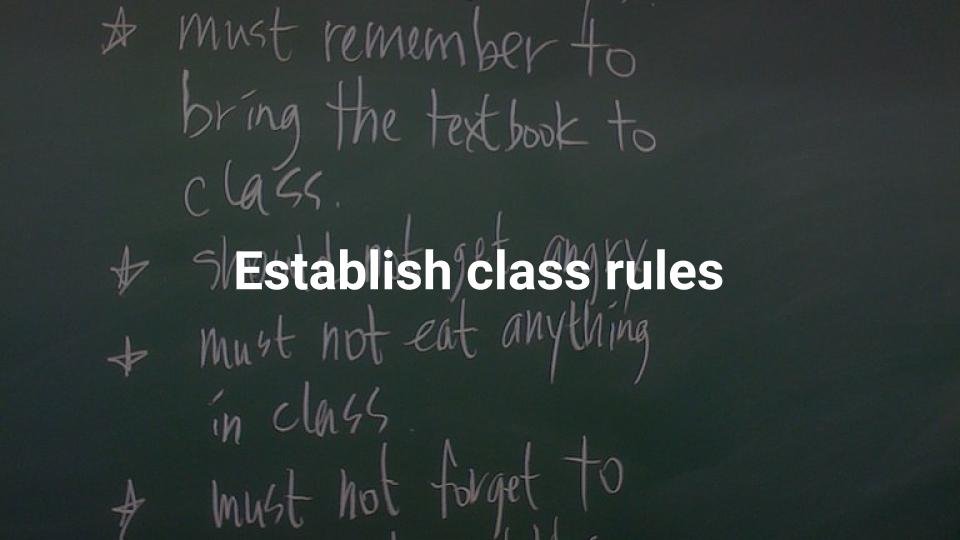
Clear classroom rules and expectations help establish a good classroom atmosphere. Clear rules establish a positive learning environment where everyone knows what is expected. Don’t just explain the rules day one, but live the rules the entire class.
Some rules are pretty basic and others are not. The following list contains some possible areas to consider adopting and defining for your classes.
· Expectations of no cell phones or other electronic devices in class or when the use if proper
· No food or drinks in class
· Expectations of proper respect to different points of view in discussions
· Group work policies
· Assignment due dates (decide whether assignments are due at the beginning of class, end of class, or before class)
· Timing and length of break times
· Assignment submission methods (This includes the type of document you request, how the file might be named if you want it a specific way, and the method of submission whether email, uploaded to a specific site or a cloud service, or submitted in class).
· Citation style for class assignments
· Attendance and participation expectations
· Late work policies
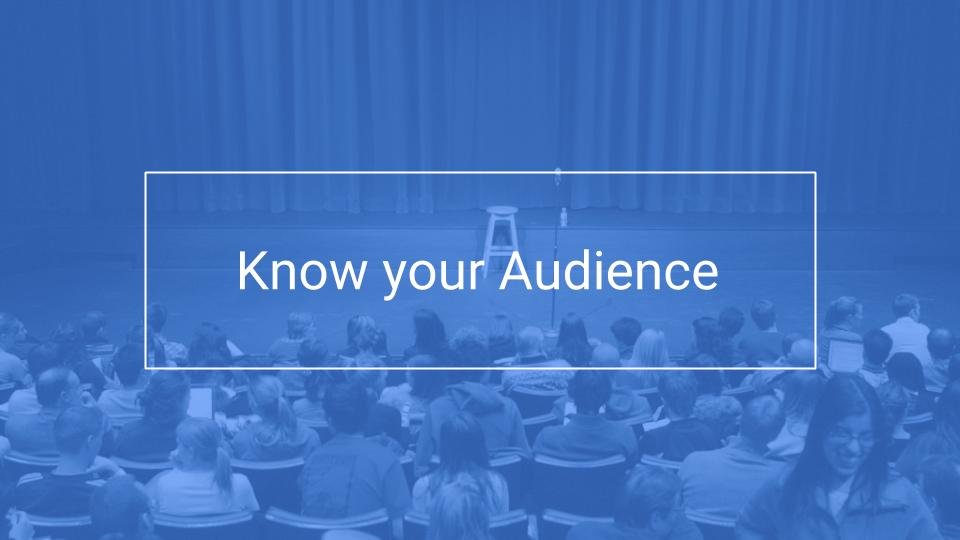
Be aware of your audience. Students that are required to take a class can have different expectations than those that chose to take it as an elective. Students in a major might also be more interested in the topic than non-majors. Take some time to learn about your students. The first day of class is a good time to ask about what their career goals are, their outside interests, and some of their background.
An Icebreaker can be a good way to start learning the students. The first day of class, ask the students to say their name, major, and one thing they like to do with their time. Asking about what they like to do with their time is a Carnegie strategy that allows the students to then decide if they want to give their job, hobby, or other interest. If you ask what they do, students might list school or a job. If you ask what they like to do with their time, you can get different answers. Make sure you take a couple notes as the students go around the room. I tend to list keywords on my class roster.
Knowing who the students are can build a relationship between the student and teacher. Students show increased effort in classroom activities when teachers take an interest in students as individuals (Jones, 2008). Connect the class content to what the students are interested in. Without taking a few minutes to know the students, you will not know how to connect the content. You need to adjust the content of the class to relate to the students and meet their needs. There are times when the students have to take required classes that they don’t want to. Building a professional student relationship can help the class be more interesting for both the student and instructor.
While on the topic of knowing your students, you need to spend a little time going over the class roster the first week to make sure that you are using students’ preferred name. Many times, students will have a nickname that they prefer over their given name. Let me provide another reason to review the roster from an example in one of my classes about ten years ago.
I was taking attendance as I normally do the first day of class. I wrote down the preferred names of students on my roster. Then I reached a name and it appeared the student was absent. At the end of calling roll from the roster, I ask if anyone’s name was not called. One student said that they had been missed. They provided their name which did not show up on the roster. At the first break, I asked the student to show me their class schedule to verify they were in the right place. The name on the schedule had a different name and it was the name of the student that was absent on my roster. After a few sentences in a private conversation at my desk, I learned they were transitioning from a male to a female. They identified with the female name, but had not legally changed it. Since it was not legally changed, the institution could not change it on records. Evidently, almost everyone knew, but this was the first time I had her in class. The class did not recognize the name on the roster, because they called her by her preferred name. Needless to say, it was easy to fix on my roster and I called her by her preferred name for the rest of class.

